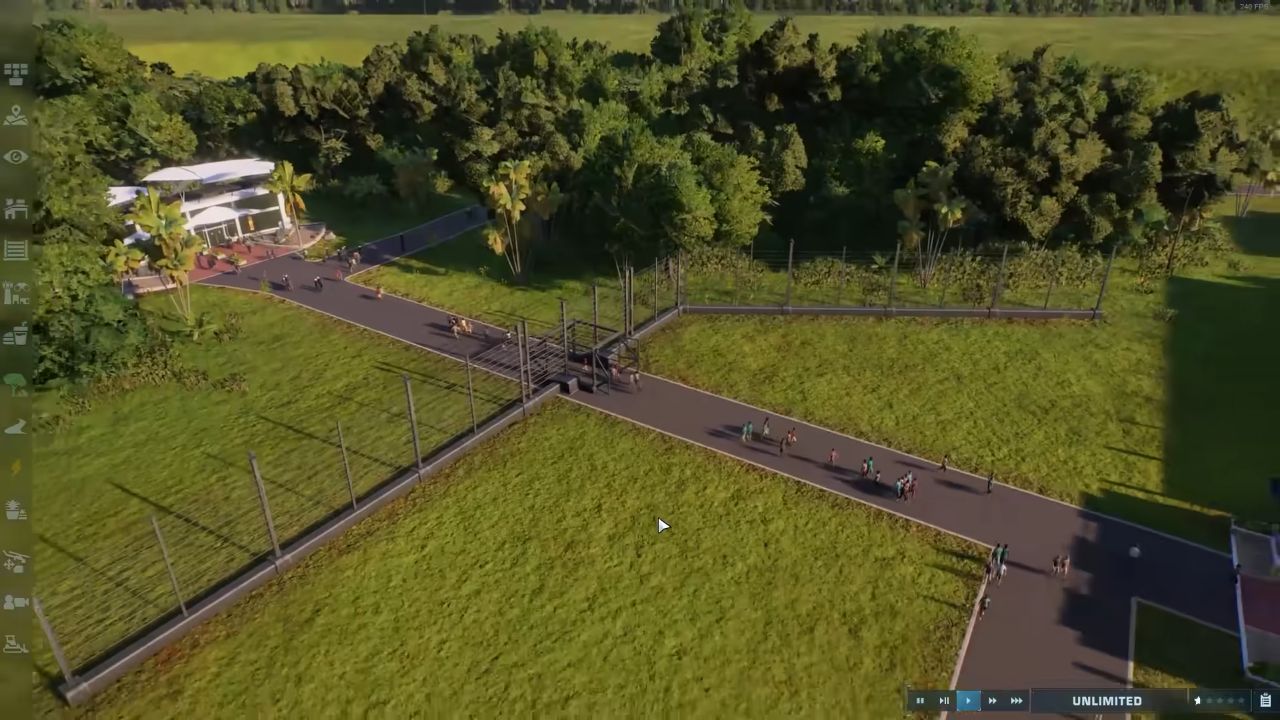Seeking methods to incorporate authentic security structures within your Jurassic World Evolution 2 park?
This tutorial demonstrates positioning Vehicle Gates along visitor pathways without requiring modifications.
By implementing these techniques, you’ll enhance restricted zone management, establish thorough entry checks, and seamlessly isolate secure areas like research facilities while avoiding connectivity errors. Follow these instructions to integrate this advanced security solution into your park design.

Leveraging the Lagoon Anomaly
Central to this technique is utilizing terrain manipulation mechanics involving aquatic environments, a strategy refined through community experimentation in projects like aquatic habitat designs.
Credit extends to innovative creators who first demonstrated platform-based positional exploits, which inspired adapting the concept for pedestrian pathways.




Implementation Guide
Initiate by sculpting terrain formations. Create concentric elevation patterns resembling geological strata – maintain incremental height differences from starting elevation to final flat surfaces.
Position aquatic basins at calculated intervals. Excavate minimal depth near basin edges, then refine surfaces to enable proximity between water features and structural components – critical for successful object placement.
Identify viable attachment points for submerged platforms indicated by interface highlighting. Temporary installations create necessary spatial configurations despite eventual removal during final adjustments.
Drain selected water segments after platform positioning. Route pedestrian walkways beneath overhanging structures, ensuring precise alignment under elevated elements.
Test barrier placement through iterative terrain adjustments, modifying elevation until security structures interface correctly with pathways. Alternate between barrier models as needed for aesthetic preferences, tweaking path layouts for optimal symmetry.
Finalize installations by removing transitional structures, leaving fully functional access controls integrated with visitor routes.




Operational Benefits
Activated barriers permit regulated visitor flow, while deactivation creates impassable checkpoints for sensitive areas.
This approach enables sophisticated park zoning without compromising accessibility requirements or aesthetic cohesion, merging practical security with immersive design elements.

